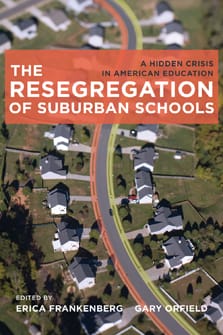 Gary Orfield is at it again, although this time with a twist: This book, edited by Orfield and Penn State professor Erica Frankenberg, focuses on how suburban areas are handling an influx of poor and minority students—and how they might handle it better. The book profiles six suburbs (located outside Atlanta, Boston, Chicago, Los Angeles, Minneapolis, and San Antonio) as well as Beach County, Florida (which encompasses West Palm Beach and Boca Raton). Each case study analyzes demographic shifts, how the districts are combating their schools’ achievement gaps, and what the political and cultural hurdles are to achieving true racial integration (Orfield’s long-time end-goal). (Prefacing these chapters is a welcome analysis and discussion of the demographics of suburbia at large—showing that, across the board, it’s less homogenous than many people suppose.) The Resegregation of Suburban Schools is a worthy contribution to the academic literature on suburbia and a thought-provoking read on the morality of desegregation. But look elsewhere for concrete policy ideas. In these pages are only vague proposals for affirmative-action programs when hiring educational professionals, amorphous “involvement” of civil-rights organizations like the NAACP in the suburbs, and an increase in magnet schools and student-exchange programs (i.e., busing across district lines). The recent attempts to extend integration programs to the suburbs should stand as a lesson: Racial integration—while a nice idea—can quickly bog down. It might be time to start thinking of diverse schools as one choice for parents, rather than a forced reality.
Gary Orfield is at it again, although this time with a twist: This book, edited by Orfield and Penn State professor Erica Frankenberg, focuses on how suburban areas are handling an influx of poor and minority students—and how they might handle it better. The book profiles six suburbs (located outside Atlanta, Boston, Chicago, Los Angeles, Minneapolis, and San Antonio) as well as Beach County, Florida (which encompasses West Palm Beach and Boca Raton). Each case study analyzes demographic shifts, how the districts are combating their schools’ achievement gaps, and what the political and cultural hurdles are to achieving true racial integration (Orfield’s long-time end-goal). (Prefacing these chapters is a welcome analysis and discussion of the demographics of suburbia at large—showing that, across the board, it’s less homogenous than many people suppose.) The Resegregation of Suburban Schools is a worthy contribution to the academic literature on suburbia and a thought-provoking read on the morality of desegregation. But look elsewhere for concrete policy ideas. In these pages are only vague proposals for affirmative-action programs when hiring educational professionals, amorphous “involvement” of civil-rights organizations like the NAACP in the suburbs, and an increase in magnet schools and student-exchange programs (i.e., busing across district lines). The recent attempts to extend integration programs to the suburbs should stand as a lesson: Racial integration—while a nice idea—can quickly bog down. It might be time to start thinking of diverse schools as one choice for parents, rather than a forced reality.
SOURCE: Erica Frankenberg and Gary Orfield, eds., The Resegregation of Suburban Schools: A Hidden Crisis in American Education (Cambridge: Harvard Education Press, 2012).
